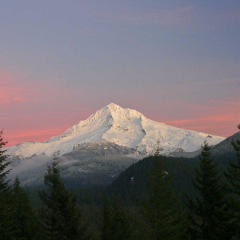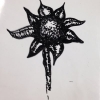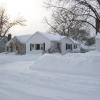-
Who's Online 3 Members, 0 Anonymous, 43 Guests (See full list)
-
Popular Contributors
-
Activity Stream
-
178
April 2024 Observations and Discussion
Cool temperatures this weekend hopefully I can avoid any frost Sunday morning as temps may dip into the mid 30s. Later next week one of the stronger storms in this year's LRC will likely ignite a major sever weather outbreak across the middle of the country. Models are already showing significant amounts of rain in my area but it's gonna have to show me it can actually happen here in the show me state before I get to excited. -
178
April 2024 Observations and Discussion
The official H/L yesterday at Grand Rapids was 51/42. As has been the case many times this spring it was a windy day with the average wind of 15.3 MPH and the highest wind of 39 MPH out of the W. That wind made it feel much colder than that 51. There was a reported 0.12" of rainfall and the sun was out 94% of the time. For today the average H/L is now up to 60/39 the record high of 83 was set n 1987 and the record low of 13 was set in 1897. (good 4 digit lottery numbers for today) The most rain fall of 2.45" fell in 2000 the most snow fall of 0.4" fell in 1943 the most snow on the ground was a trace in 2013. Last year the H/L was 73/41 and there was 0.16" of rainfall. -
178
April 2024 Observations and Discussion
The flood of 2013. January 2013 was a rather wet month with 4.01” of total precipitation. February was snowy (33.1”) and wet (3.05”) while March was dryer with just 0.94” of precipitation. Then came April with 11.10” of rain and melted snow. That 11.10” is by far the wettest for any April. And is the 3rd wettest for any month at Grand Rapids. All that precipitation in January, February and April led to the big flood of April 2013. West Michigan saw weeks of heavy rainfall caused widespread flooding and led the Grand River to crest at record levels. Grand Rapids already had shattered its longstanding April rainfall record, but just crept into the top three wettest of any month of the year. The No. 1 spot goes to June 1892, when 13.22 inches of rain fell. Second place gs to September 1986, when 11.85 inches fell. On April 21, in Comstock Park, the Grand River crested at 17.8 feet, 5.8 feet above the 12-foot flood stage while in Grand Rapids, the river rose to 21.85 feet, or 3.85 feet above the 18-foot flood stage. A storm deemed "catastrophic" that had the potential to drop 3 to 4 inches of rain had also barely missed the Grand Rapids area on the day that the water crested in the Grand River, so we kind of lucked out on that. I work for the West Michigan Whitecaps and there were several home games during that flood. A large section on the north parking lot was flooded and the road along the river was closed. The only way in and out of the park was thru the secondary way under the overpass for US 131. On the east side of the ballpark there was water that was up to the top of the stop signs and during one game there were huge logs floating through the parking lot. here is some video about the flood of 2013 https://www.youtube.com/watch?v=Ee56qwN9wcs- 1
-

-
1859
April 2024 Weather in the PNW
I actually said one GFS run from days ago looked very wet down there because it showed rain all day on both Saturday and Sunday. It was an accurate statement on that specific run then and still is accurate when referring to that specific run. It was not a prediction. That specific run did not verify. -
1859
April 2024 Weather in the PNW
Gorgeous day. Was up in the Seattle area earlier. Giving my best friend and his wife a ride to Sea-Tac. They will be going to New York and DC this week. Great day to drive up I-5 with the mountains popping. Had enough time afterward to check out a nice park along the Green River near Kent before heading back south. Temps were in the mid-60s with breezy conditions and very dry air.- 2
-

-









Recommended Posts
Join the conversation
You can post now and register later. If you have an account, sign in now to post with your account.